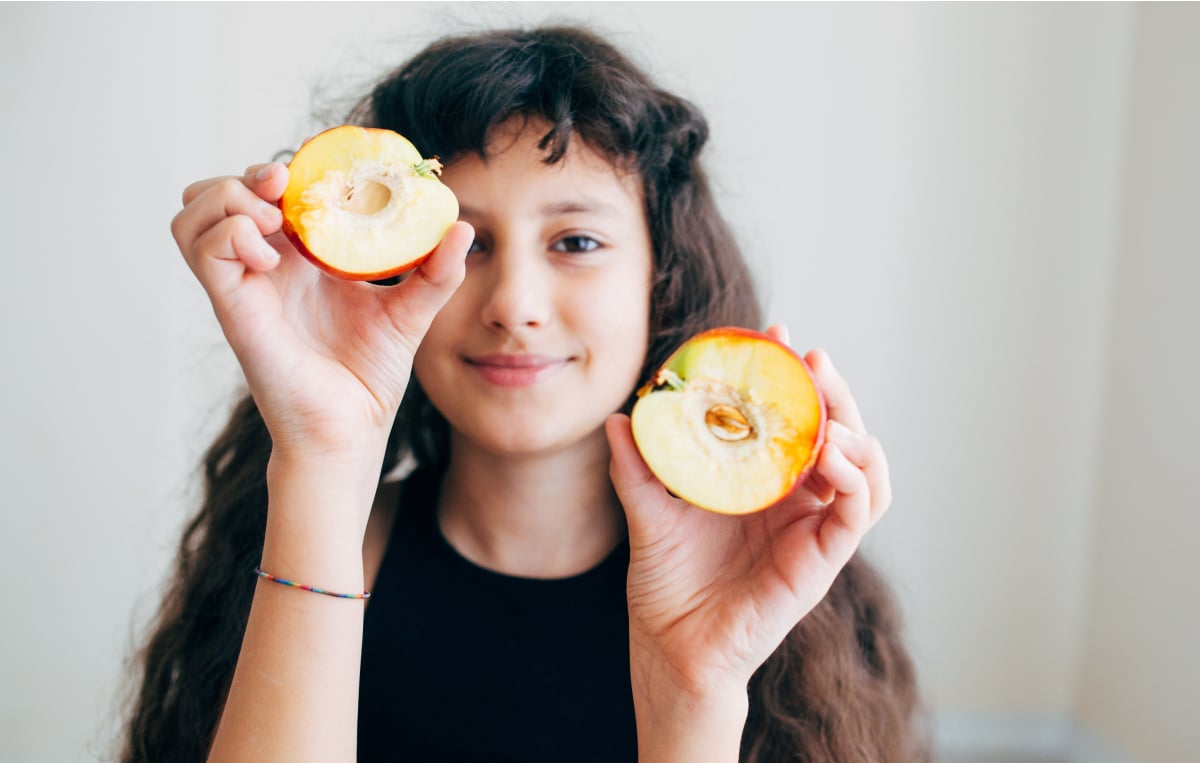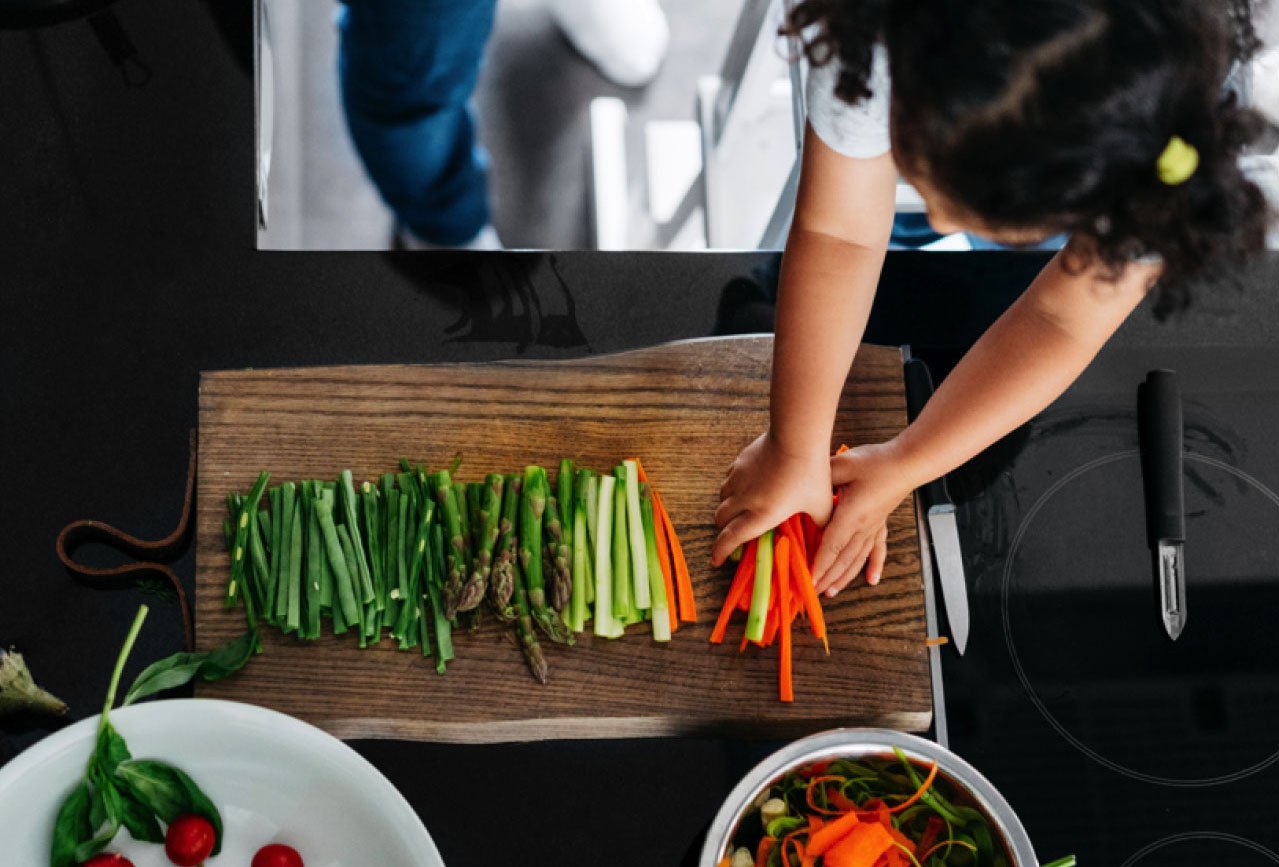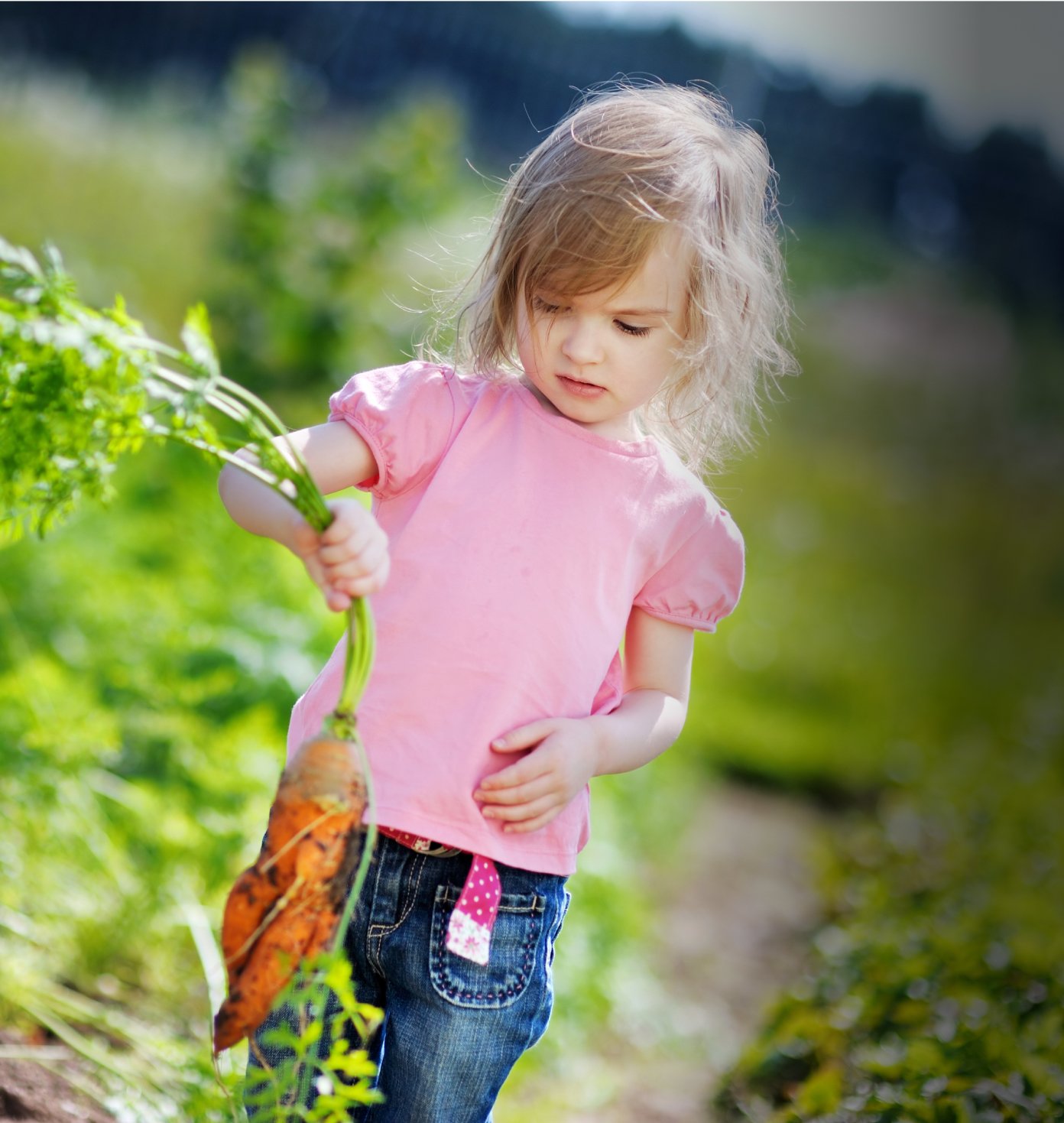EWG’s 2024 Shopper’s Guide to Pesticides in Produce™
By EWG Science Team
MARCH 20, 2024

Top three takeaways
- EWG’s 2024 Dirty Dozen™ is loaded with fungicides that can disrupt human hormone systems.
- This year, 75 percent of non-organic produce – and 95 percent of items on the Dirty Dozen – is coated with pesticides.
- Almost 65 percent of EWG’s 2024 Clean Fifteen™ fruit and vegetable samples had no detectable pesticide residues.
Overview
Non-organic produce is loaded with fungicides that may harm human hormone systems, EWG’s 2024 Shopper’s Guide to Pesticides in Produce™ finds.
Across fruits and vegetables from EWG’s Dirty Dozen™ – the component of the Shopper’s Guide that identifies the 12 non-organic, or conventional, fresh produce with the most pesticides – four of the five most frequently detected chemicals the fungicides fludioxonil, pyraclostrobin, boscalid and pyrimethanil.
Two of these, fludioxonil and pyrimethanil, also show up in the highest average concentrations of any pesticides found on the Dirty Dozen. Both fungicides may be endocrine disruptors with potential to harm the male reproductive system.
Other fungicides are linked to similar health harms – and many others have not been adequately studied.
This year, EWG determined that 75 percent of all conventional fresh produce sampled had residues of potentially harmful pesticides. But for items on the Dirty Dozen, a whopping 95 percent of samples contain pesticides.
EWG’s 2024 Shopper’s Guide to Pesticides in Produce analyzes data from tests conducted by the Department of Agriculture and Food and Drug Administration on 47,510 samples of 46 fruits and vegetables.
The USDA peels or scrubs and washes produce samples before they’re tested, whereas the FDA removes only dirt first. Even after these steps, the agencies’ tests still found traces of 254 pesticides in all fruits and vegetables tested – and 209 of these were on Dirty Dozen produce.
That’s why the EWG Shopper’s Guide to Pesticides in Produce also includes the Clean Fifteen™, a list of the fruits and vegetables with very low or no pesticide residues.
EWG recommends consumers seeking fresh produce with low pesticide residues buy organic versions of items on EWG’s Dirty Dozen and either organic or non-organic versions of produce on the Clean Fifteen. There are also many organic and Clean Fifteen options in the frozen food aisle.
This year we also conducted an analysis of the USDA’s first round of new baby food tests, summarized below.
Everyone should eat plenty of fresh fruits and vegetables, whether organic or conventionally grown. The health benefits of such a diet outweigh the risks of pesticide exposure.
- See the Dirty Dozen.
- See the Clean Fifteen.
Fungicides on EWG’s Dirty Dozen
Four of the five pesticides found most frequently on the Dirty Dozen are fungicides: fludioxonil, pyraclostrobin, boscalid and pyrimethanil.
Fungicides are applied on fruits and vegetables to prevent or kill fungal diseases like powdery mildew. They’re often applied after harvest to keep produce mold-free on its way to market. That’s likely why fungicide concentrations can be so high on some samples – higher than other pesticides applied earlier in the growing season.
Although the potential human health harms of fungicides aren’t as well studied as other pesticides, emerging evidence suggests many widely used fungicides may disrupt the hormone system.
These four are no exception, although more studies are needed for all of them to understand the risks they pose to humans, particularly children.
- Studies of fludioxonil have found it can act like estrogen, increasing the proliferation of breast cancer cells. It also has the potential to harm the male reproductive system. Fludioxonil is found on 90 percent of peaches and nearly 30 percent of Dirty Dozen samples.
- Pyrimethanil has been linked to thyroid disruption and might block androgen receptors in the body. Pyrimethanil was the most frequently detected pesticide on pears, showing up on 54 percent of samples.
- Some studies have suggested that pyraclostrobin could be associated with liver toxicity and metabolic disorders. Pyraclostrobin was found on 10 percent or more of each Dirty Dozen item, and about half of strawberry and cherry samples.
- In animal studies, boscalid has been linked to cancer and thyroid dysfunction, and it may also disrupt hormones. Boscalid was found on almost half of blueberry samples, and just over 50 percent of cherries and strawberries.
EWG’S 2024 DIRTY DOZEN
Of the 46 items included in our analysis, these 12 fruits and vegetables were most contaminated with pesticides:
- Strawberries
- Spinach
- Kale, collard and mustard greens
- Grapes
- Peaches
- Pears
- Nectarines
- Apples
- Bell and hot peppers
- Cherries
- Blueberries
- Green beans
Some Dirty Dozen highlights:
- A total of 209 pesticides were found on Dirty Dozen items.
- Across all 12 items, 95 percent of samples had pesticides.
- Over 90 percent of samples of strawberries, apples, cherries, spinach, nectarines and grapes tested positive for residues of two or more pesticides.
- More than 50 pesticides were detected on samples from each item on the Dirty Dozen, except cherries.
- The most pesticides were found on kale, collard and mustard greens, with 103 individual chemicals found across the items in the category.
- Hot peppers and bell peppers were next, with 101.
- All of the produce on the Dirty Dozen had at least one sample with at least 13 pesticides — and some had as many as 23.
- The neurotoxic organophosphate insecticide acephate, prohibited from use on green beans in 2011, was detected on six percent of that crop’s samples.
See the full list of all 2024 Shopper’s Guide fruits and vegetables.
EWG’S 2024 CLEAN FIFTEEN
These 15 types of produce had the lowest amounts of pesticide residues, according to EWG’s analysis of the most recent USDA data.
- Avocados
- Sweet corn
- Pineapple
- Onions
- Papaya
- Sweet peas (frozen)
- Asparagus
- Honeydew melon
- Kiwi
- Cabbage
- Watermelon
- Mushrooms
- Mangoes
- Sweet potatoes
- Carrots
Some Clean Fifteen highlights:
- Almost 65 percent of Clean Fifteen fruit and vegetable samples had no detectable pesticide residues.
- Avocados and sweet corn were the cleanest produce – less than 2 percent of samples of each showed any detectable pesticides.
- Just over 10 percent of Clean Fifteen fruit and vegetable samples had residues of two or more pesticides.
- No sample from the first six Clean Fifteen items tested positive for more than three pesticides.
See the full list of all Shopper’s Guide fruits and vegetables.
Pesticides in baby food
In 2022, the USDA collected and tested several types of baby food, including sweet potatoes, green beans, peaches and pears, for pesticides. This is the first time the agency has sampled baby food for pesticides in over a decade.
The results, released in January 2024, show that non-organic baby foods are considerably less contaminated by pesticides than their whole fruit and vegetable counterparts, suggesting that baby food manufacturers and suppliers may be taking extra steps to reduce pesticides in baby food.
The USDA test results are largely consistent with what EWG found in our 2023 tests of baby food, which detected residues in 38 percent of products tested.
This is just the first round of results from a series of USDA tests that will be conducted through 2024. A more complete picture of these and a few other types of baby food (carrots, peas and applesauce) will be available next year, once more samples have been analyzed and the results released by the USDA.
Meanwhile, you can read a summary of our analysis of the USDA’s first round of baby food tests here.
Pesticides and children’s health
This year, the overall picture remains problematic: Too many pesticides are still found on too much of the produce millions of Americans eat every day.
Many peer-reviewed scientific studies have shown links between pesticides and human health problems. These findings raise important questions about the safety of pesticide mixtures found on produce. For example, research from Harvard University shows that consuming fruits and vegetables with high levels of pesticide residues may lessen the benefits of fruit and vegetable consumption, including protection against cardiovascular disease and mortality.
But EWG is especially concerned about how pesticides can harm children’s health. A recent EWG investigation published in the peer-reviewed journal Environmental Health found that the EPA has failed to adequately protect children from pesticides. For almost 90 percent of the most common pesticides, the agency has neglected to apply the Food Quality Protection Act–mandated children’s health safety factor to the allowable limits.
The threats pesticides pose to children’s health have been known since at least 1993 – over 30 years ago – when the National Academies of Science, Engineering, and Medicine published a landmark study warning of inadequate oversight.
The American Academy of Pediatrics recommends parents concerned about their children’s exposure to pesticides consult EWG’s Shopper’s Guide.
About EWG’s Shopper’s Guide to Pesticides in Produce
EWG's Shopper’s Guide to Pesticides in Produce is a suite of materials investigating the presence of pesticides in foods and the ways they could harm people, especially children – and to help consumers make the best, most informed choices for their families.
We’ve published the guide nearly every year since 2004.
EWG's Shopper’s Guide is designed to support people who would like to minimize their exposure to pesticides. It includes two well-known lists: the Dirty Dozen, or the 12 fresh non-organic, or conventional, fruits and vegetables with the highest pesticide residues, as well as the Clean Fifteen, the conventionally grown fruits and vegetables with very low or no traces of pesticides.
Some pesticides have more data linking them to health concerns than others. These pesticides are particularly concerning for children, who are especially susceptible to many of the health harms associated with pesticide exposure.
The presence of so many different pesticides in foods is also problematic. There’s little data available about how multiple pesticides interact with each other in the body or how such mixtures could compound each chemical’s individual potential health harms. But the data we do have suggests that when chemicals are present in a mixture, they may be toxic to humans at lower levels than when alone.
When regulating pesticides, government bodies also consider them only one at a time. They don’t look at the potential total body burden for consumers.
More information
Here are more resources from EWG’s 2024 Shopper’s Guide to Pesticides in Produce:











